Bacon-Knight House (1760)
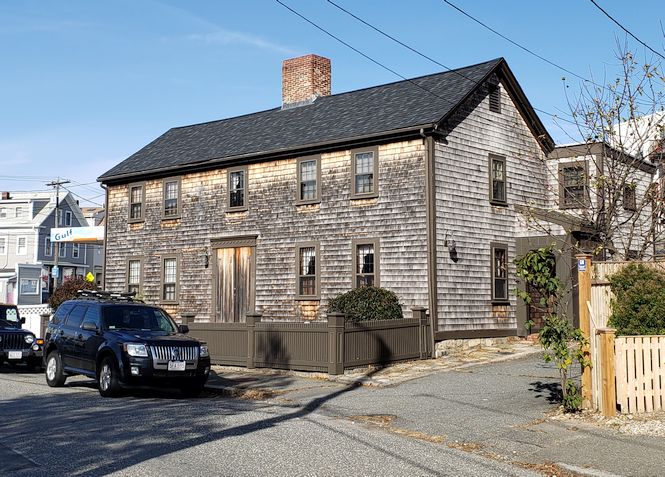
The Bacon-Knight House is a colonial home located at 10-12 Pine Street in Gloucester.

The Bacon-Knight House is a colonial home located at 10-12 Pine Street in Gloucester.
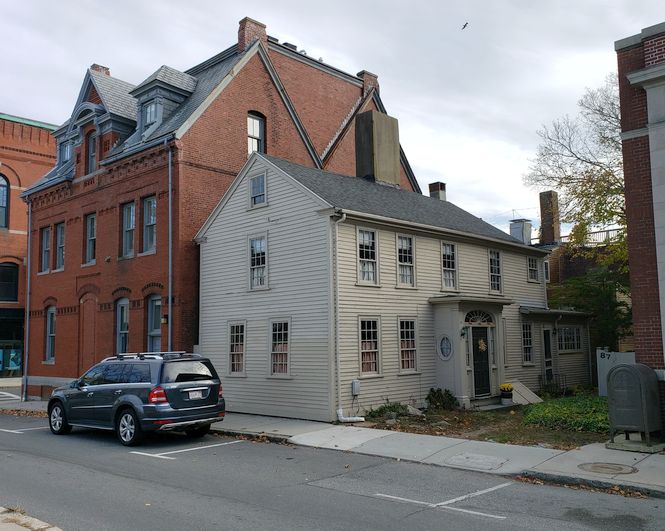
The house at 87 Middle Street in Gloucester (on the right in the image above) was built c. 1785 (or as early as 1718?). In this vicinity in colonial times (possibly where the building on the left, 18 Pleasant Street, stands today) was the well-known barber shop of Rebecca Broome Ingersoll. Her father, James Broome, was also a barber and ran a tavern in the 1750s and 1760s. As related in The Gloucester Book (1921), by Frank L. Cox,
In connection with the tavern he kept a barber shop and his daughter, Rebecca, who became an expert barber carried on the business in a shop at the corner of Pleasant and Middle streets. Her shop was for years the gathering place of all the wits and story tellers in the town. The tavern originally stood at 79 Middle street.
Rebecca Broome married Andrew Ingersoll. Their daughter Rebecca would eventually take over the business from her mother. As related by John J. Babson in his History of the Town of Gloucester, Cape Ann (1860):
She was intelligent and lively; and through her intercourse from childhood with all classes of people, seamen and landmen, acquired a fund of information which made her a very agreeable talker. She last occupied an old house which stood on a lane leading from Front Street to the water-side; and many of our middle-aged people remember the attractions of pictures, birds, and anecdotes, which made the shop of “Aunt Becky” a place of the highest enjoyment in their youthful days.
According to an essay on the “Essex County Dialect” by Helen Mansfield that appeared in the Bulletin of the Essex Institute, Vol. 26, Nos. 7-12 (July-December 1894):
L and n were interchangeable, (m with them, to some extent; Tomlinson, Tumpleson, Tumblesome). Ingersoll was long Inkerson on Gloucester records, and seventy years ago the two forms were co-existent. “Aunt Becky Ingersoll,” a barber with a famous parrot, used to say, “Between Capt. Jack Ingersoll’ and the Inkersons about, there’s a difference.” (They were all of the same stock.) Any man now would sit on the capson of the wharf, instead of the capsill.
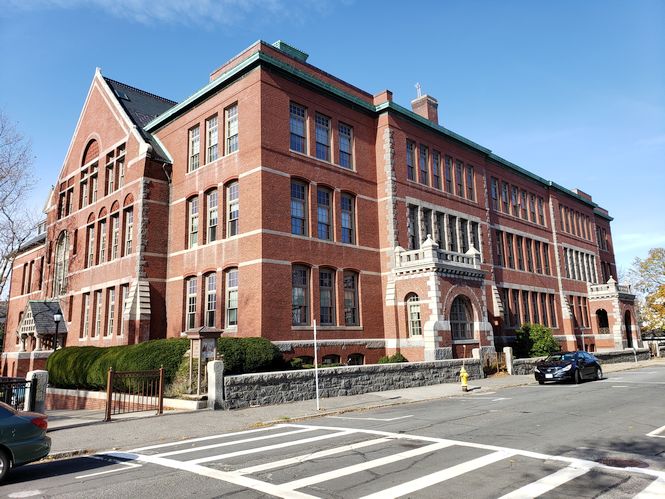
Designed by architect Tristram H. Griffin, Central Grammar School is a former high school building erected in 1889 at 10 Dale Avenue, opposite City Hall in Gloucester. It was the city’s first four-year high school. An 1922 addition, built in a style compatible with the original section, more than doubled the size of the building. In 1974-1975, the building was converted into affordable housing for elderly residents. In 2010, the Central Grammar Apartments received a grant of $2.7 million from the state Department of Housing and Community Development for modernization and renovation.
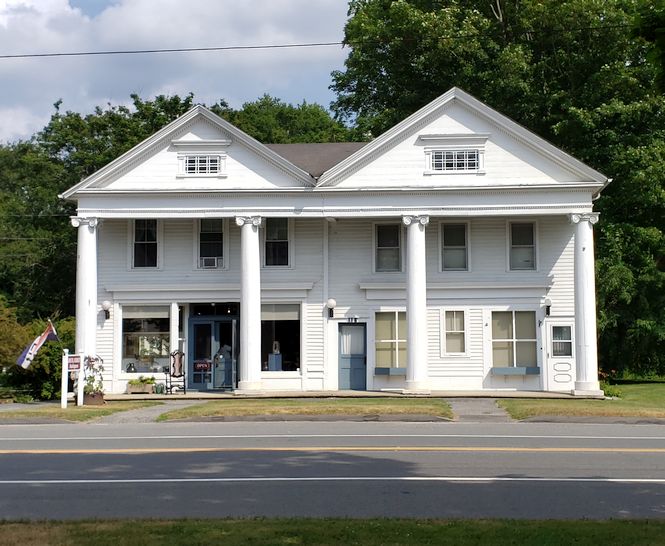
The Greek Revival commercial building at 116 Main Street in Sheffield was built c. 1845. In the early twentieth century it was known as the Cassidy Building and housed Sheffield’s Post Office, with James G. Cassidy as postmaster from 1914 to 1922, succeeded by Miss Beatrice Ellis from 1922 to 1934. The building was again the Post Office from 1957 to 1966, with J. Wesley Warren as postmaster. The building has housed a number of antiques dealers over the years. Most recently, it is home to Samuel Herrup Antiques.
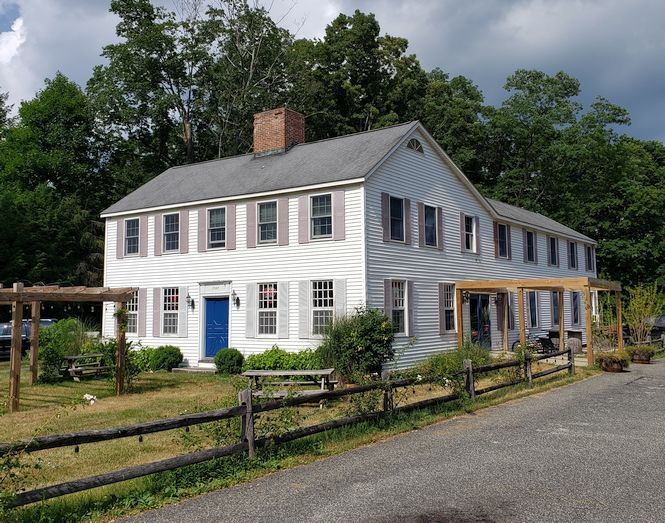
The saltbox house at 139 South Main Street in Sheffield was moved to its current location in 1946 from Wethersfield, Connecticut, where it had an address of 191 or 197 Main Street. It is thought to have been built c. 1727 by Jonathan Goodrich, who soon sold it in 1737 to Jonathan Stillman. In 1769 the property was acquired by Silas Deane (1737-1789), but it was not his residence. At the time he was erecting his own house next door at 203 Main Street. A wealthy merchant and lawyer, Deane played a vital role during the Revolutionary War. He was sent abroad by a secret committee of the Continental Congress in 1776 to secure aid from the French government. He later worked closely with Benjamin Franklin to negotiate the treaty of alliance with France that led to the sending of an army under the Comte de Rochambeau to aid George Washington. Together they would win the Battle of Yorktown in 1781. Deane’s house in Wethersfield is now part of the Webb-Deane-Stevens Museum.
Dr. Barwick Bruce, who came to Wethersfield from Barbados, purchased the Goodrich House in 1809. He sold it in 1816 to Dr. Ashbel Robertson (1787-1847). As related in Stiles’ History of Ancient Wethersfield, Vol. I (1904), page 728-729:
Dr. Robertson, for many years, carried on a mechantile business, sold wines and liquors (under a license) and practiced medicine. His store, with roof cut down and a brick front added, is now occupied by Comstock, Ferre & Co., as a seed warehouse, a little further up the same street. The mansion is now occupied by Mr. Austin Robertson, a son of the old doctor [.]
Austin Robertson was for many years the town tax collector and before the turn of the century, Wethersfield residents would come to his house where he accepted payment. In 1909, the house was still owned by Austin Robertson, but by the 1920s, after Robertson passed away, it was owned by E. Hart Fenn, who lived in the Silas Deane House next door. The Red Cross used the Goodrich-Robertson house during World War I. The house was moved to Sheffield in 1946 by a Mr. Tompkins, but its foundations can still be seen on the property of the Webb-Deane-Stevens Museum. There is also a c. 1910s Wallace Nutting photograph of paneling from the house.
Although Silas Deane did not live in the Goodrich-Robertson House, its former proximity to his Wethersfield home led to to its becoming known as the Silas Deane House. In 1956, ten years after its move to Sheffield, the house was bought by Mr. and Mrs. Ralph Jones, who ran an antiques shop in the building. Most recently, the house has been the Blue Door Market & Cafe.
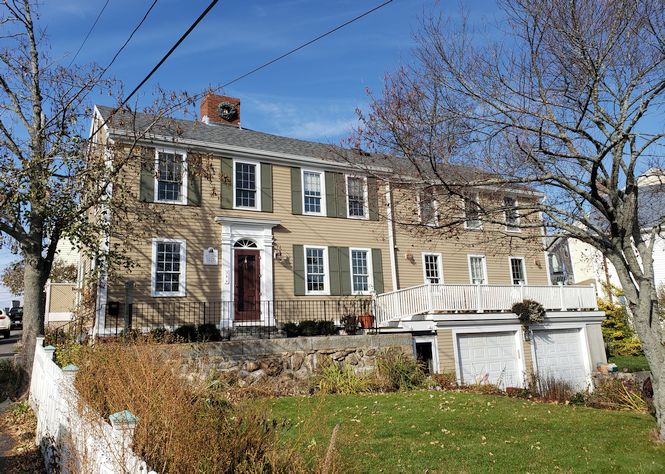
According to the historic marker on the side of the house at 3 Granite Street in Gloucester, it was built c. 1810 and was the home of Jesse Wilson, a housewright. He was also a fireman and a visitor of the Universalist Church. Comparing an image of the house from c. 1969 with its appearance today, it is clear the house has been extensively remodeled and expanded in recent years.
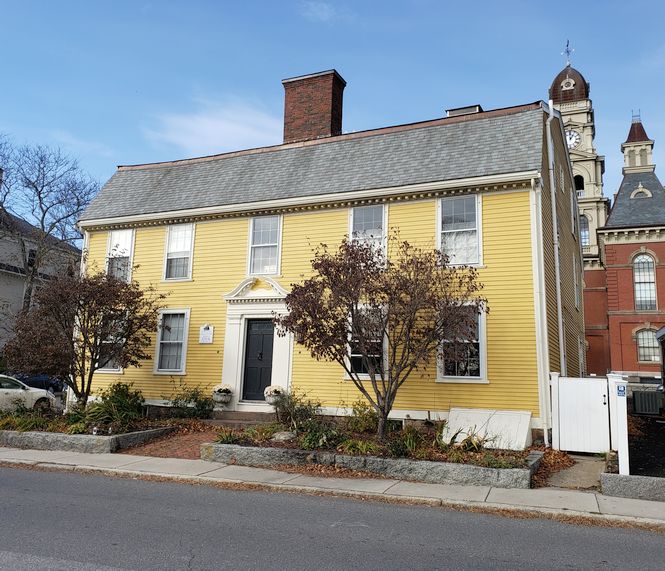
The Hardy-Parsons House at 90 Middle Street in Gloucester was built in 1764 (according to a historic marker on the house) by Capt. William Dolliver, a mariner. The Hardy family occupied the house for many years and, at some point, Judy Millett had a school for small children in the west room of the house. In the mid-twentieth century the house was occupied by Samuel H. Mansfield and his wife, Carrie Esther Parsons Mansfield. They collected works by artist Fitz Henry Lane that are now in the Cape Ann Museum. In 1948, Mrs. Mansfield left the house to the Cape Ann Historical Association. It is now privately owned.
Charles Olson, the poet and resident of Gloucester who railed against the destruction of old buildings wrought by urban renewal, references the Hardy-Parsons House in “Maximus, to Gloucester: Letter 2,” as “the house the street cuts off.” (see also “A Scream to the Editor“).